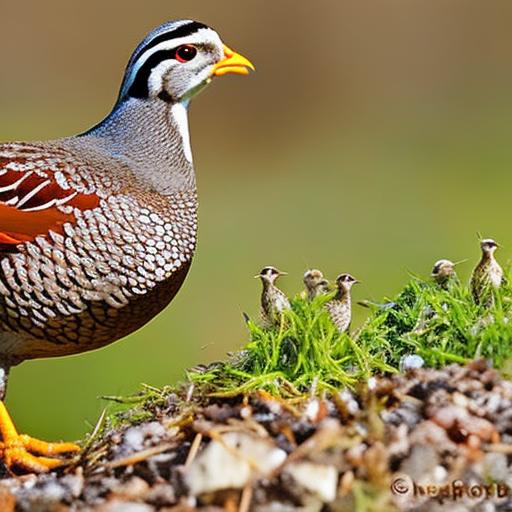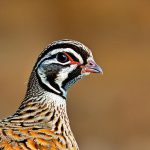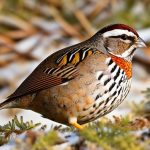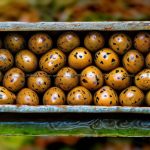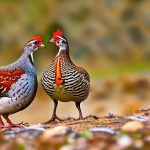Keeping quail with bantams can be a rewarding and enjoyable experience for poultry enthusiasts. Quail are small, ground-dwelling birds that are known for their delicious eggs and meat, while bantams are miniature chickens that are prized for their ornamental qualities and friendly disposition. When kept together, quail and bantams can create a diverse and interesting flock that provides both eggs and entertainment. However, there are several important considerations to keep in mind when housing and caring for these two types of birds together. This article will explore the housing requirements, feeding and nutrition needs, health management, integration strategies, and breeding and reproduction considerations for keeping quail with bantams. By understanding these key aspects of care, poultry keepers can create a harmonious and thriving environment for their quail and bantams.
Key Takeaways
- Quail and bantams can be kept together in the same enclosure, but it requires careful planning and consideration of their specific needs.
- Housing for quail and bantams should provide separate areas for nesting, roosting, and feeding to prevent aggression and ensure their well-being.
- Quail and bantams have different dietary requirements, so it’s important to provide a balanced diet that meets the needs of both species.
- Regular health checks and proper hygiene practices are essential for preventing and managing diseases in quail and bantams.
- When integrating quail and bantams in the same enclosure, it’s important to monitor their behavior and provide enough space to prevent overcrowding and aggression.
Housing Requirements for Quail and Bantams
When keeping quail with bantams, it is important to provide a suitable housing environment that meets the needs of both species. Quail are ground-dwelling birds that require a secure and predator-proof enclosure with plenty of space to roam and forage. A quail enclosure should have a solid floor to prevent digging predators from gaining access, as well as a covered area to protect the birds from the elements. Additionally, quail benefit from having access to dust baths and hiding spots to exhibit their natural behaviors. On the other hand, bantams require a similar level of security and protection from predators, but they also need roosting bars and nesting boxes for laying eggs. When housing quail and bantams together, it is important to provide separate areas for each species to meet their specific needs. This can be achieved by dividing the enclosure with wire mesh or using separate coops within the same larger enclosure. By providing appropriate housing for both quail and bantams, poultry keepers can ensure the safety and well-being of their birds.
Feeding and Nutrition for Quail and Bantams
Feeding and nutrition are essential aspects of caring for quail and bantams in a mixed flock. Quail are omnivorous birds that require a diet high in protein to support their egg production and overall health. A commercial game bird feed or turkey starter is an ideal option for quail, as it provides the necessary protein content for optimal growth and egg laying. Additionally, quail benefit from having access to grit and calcium supplements to support their digestion and eggshell formation. On the other hand, bantams have similar dietary requirements to standard chickens, requiring a balanced diet of commercial poultry feed supplemented with fresh fruits, vegetables, and occasional treats. When feeding quail and bantams together, it is important to provide separate feeding stations to prevent competition and ensure that each species receives the appropriate nutrition. Additionally, offering a diverse range of food options can help meet the individual preferences of both quail and bantams, promoting overall health and well-being.
Managing Health and Disease in Quail and Bantams
Maintaining the health of quail and bantams in a mixed flock requires proactive management and disease prevention strategies. Both quail and bantams are susceptible to a range of common poultry diseases, including respiratory infections, parasites, and nutritional deficiencies. To minimize the risk of disease transmission between quail and bantams, it is important to practice good biosecurity measures, such as regular cleaning and disinfection of the enclosure, quarantine of new birds, and monitoring for signs of illness. Additionally, providing a balanced diet, clean water, and appropriate housing conditions can help support the overall health of both quail and bantams. In the event of illness or injury, it is important to seek veterinary care from a professional with experience in treating both quail and bantams. By staying vigilant and proactive in managing the health of their mixed flock, poultry keepers can help ensure the long-term well-being of their quail and bantams.
Integrating Quail and Bantams in the Same Enclosure
Integrating quail and bantams in the same enclosure requires careful planning and consideration to promote harmony and minimize conflict between the two species. When introducing quail to an existing bantam flock or vice versa, it is important to provide a gradual introduction process to allow the birds to become familiar with each other without causing undue stress or aggression. This can be achieved by using temporary barriers or visual barriers to allow the birds to see and smell each other before direct interaction. Additionally, providing multiple feeding stations, roosting areas, and hiding spots can help reduce competition and territorial behavior between quail and bantams. It is also important to monitor the birds closely during the integration process to ensure that any conflicts or aggression are addressed promptly. By taking a gradual and cautious approach to integrating quail and bantams in the same enclosure, poultry keepers can help foster a peaceful coexistence between the two species.
Breeding and Reproduction of Quail and Bantams
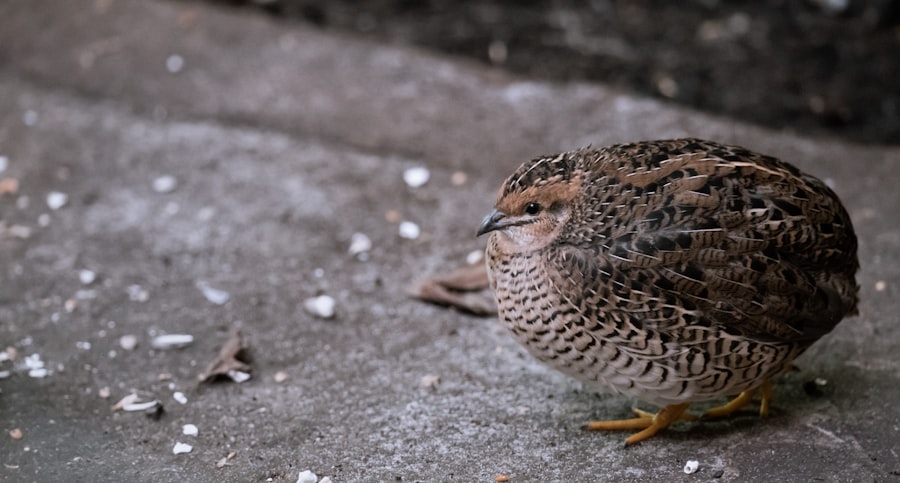
Breeding and reproduction are natural behaviors for both quail and bantams, and poultry keepers may choose to breed these birds for various purposes, such as egg production, meat production, or exhibition. When breeding quail and bantams together, it is important to consider the specific reproductive behaviors and requirements of each species. Quail are prolific layers that require suitable nesting areas with soft bedding material to lay their eggs. Additionally, quail eggs require specific incubation conditions to hatch successfully, including high humidity levels and careful turning during incubation. On the other hand, bantams are broody birds that may exhibit strong maternal instincts when it comes to incubating eggs and raising chicks. When breeding quail with bantams, it is important to provide separate nesting areas for each species to prevent interference or aggression during the breeding process. Additionally, monitoring the incubation process closely can help ensure successful hatching and chick rearing for both quail and bantams.
Tips for Successfully Keeping Quail with Bantams
Successfully keeping quail with bantams requires attention to detail, proactive management, and a deep understanding of the specific needs of each species. Some key tips for successfully keeping quail with bantams include providing separate housing areas for each species within the same larger enclosure, offering a balanced diet tailored to the nutritional requirements of both quail and bantams, practicing good biosecurity measures to prevent disease transmission between the two species, taking a gradual approach to integrating quail and bantams in the same enclosure, providing suitable nesting areas for breeding and reproduction, monitoring the health and behavior of both quail and bantams closely on a regular basis. By following these tips and remaining attentive to the individual needs of quail and bantams, poultry keepers can create a harmonious and thriving environment for their mixed flock.
In conclusion, keeping quail with bantams can be a rewarding experience that offers both practical benefits and enjoyment for poultry enthusiasts. By understanding the specific housing requirements, feeding and nutrition needs, health management strategies, integration considerations, breeding practices, and key tips for success when keeping quail with bantams, poultry keepers can create a thriving environment that supports the well-being of both species. With careful planning, proactive management, and attention to detail, poultry keepers can enjoy the unique combination of eggs, meat, ornamental qualities, and entertainment that comes from keeping quail with bantams in a mixed flock.
If you’re considering keeping quail with bantams, it’s important to understand the compatibility and potential challenges of housing these two species together. In a recent article on PoultryWizard, they discuss the dietary needs and social dynamics of quail and bantams, offering valuable insights for successful cohabitation. Understanding the specific needs of each species is crucial for creating a harmonious living environment. For more information on the natural hatching process of chicken eggs, check out their informative article on how long for chicken eggs to hatch naturally.
FAQs
What are quail and bantams?
Quail are small ground-dwelling birds that are often kept for their eggs and meat. Bantams are small breeds of chickens that are popular for their small size and ornamental qualities.
Can quail and bantams be kept together?
Yes, quail and bantams can be kept together in the same coop or aviary, as long as certain precautions are taken to ensure their compatibility and safety.
What precautions should be taken when keeping quail with bantams?
It is important to provide separate areas for the quail and bantams to nest and roost, as well as ensuring that the quail have access to their own food and water sources. Additionally, it is important to monitor the interactions between the two species to prevent any aggression or bullying.
What are the benefits of keeping quail with bantams?
Keeping quail with bantams can provide a diverse and interesting environment for poultry enthusiasts. Additionally, the quail can help control pests in the coop, while the bantams can provide companionship and protection for the quail.
Are there any drawbacks to keeping quail with bantams?
One potential drawback of keeping quail with bantams is the risk of disease transmission between the two species. Additionally, the different housing and dietary needs of quail and bantams may require additional effort and resources to manage effectively.
Meet Walter, the feathered-friend fanatic of Florida! Nestled in the sunshine state, Walter struts through life with his feathered companions, clucking his way to happiness. With a coop that’s fancier than a five-star hotel, he’s the Don Juan of the chicken world. When he’s not teaching his hens to do the cha-cha, you’ll find him in a heated debate with his prized rooster, Sir Clucks-a-Lot. Walter’s poultry passion is no yolk; he’s the sunny-side-up guy you never knew you needed in your flock of friends!

